General description
A fluid, as the name implies, is characterised by its ability to flow.It differs from a solid in that it suffers deformation due to shear stress, however small the shear stress may be. The only criterion is that sufficient time should elapse for the deformation to take place. In this sense a fluid is shapeless.
Fluids may be divided into liquids and gases. A liquid is only slightly compressible and there is a free surface when it is placed in an open vessel. On the other hand, a gas always expands to fill its container. A vapour is a gas which is near the liquid state.
The liquid with which the engineer is mainly concerned is water. It may contain up to three per cent of air in solution which at sub-atmospheric pressures tends to be released. Provision must be made for this when designing pumps, valves, pipelines, etc.
Diesel engine Vertical Turbine multistage centrifugal inline shaft water Drainage Pump This kind of vertical drainage pump is mainly used for pumping no corrosion, temperature less than 60 °C, suspended solids (not including fiber, the grits) less than 150 mg/L content of the sewage or waste water. VTP type vertical drainage pump is in VTP type vertical water pumps, and on the basis of the increase and the collar, set the tube oil lubrication is water. Can smoke temperature below 60 °C, send to contain a certain solid grain (such as scrap iron and fine sand, coal, etc.) of sewage or waste water.
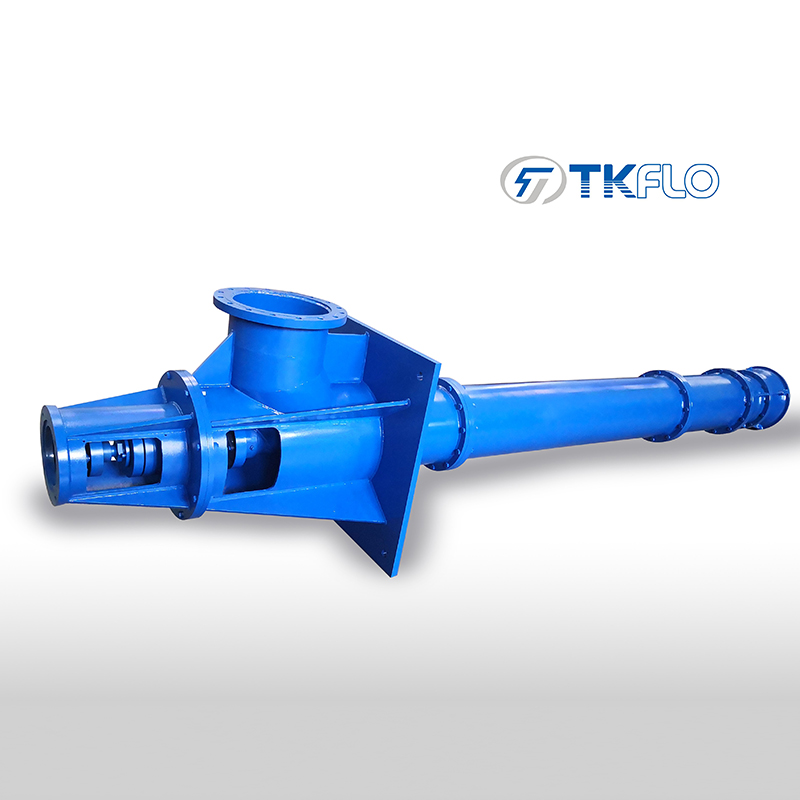
The principal physical properties of fluids are described as follows:
Density (ρ)
The density of a fluid is its mass per unit volume. In the SI system it is expressed as kg/m3.
Water is at its maximum density of 1000 kg/m3 at 4°C. There is a slight decrease in density with increasing temperature but for practical purposes the density of water is 1000 kg/m3.
Relative density is the ratio of the density of a liquid to that of water.
Specific mass (w)
The specific mass of a fluid is its mass per unit volume.In the Si system, it is expressed in N/m3. At normal temperatures, w is 9810 N/m3 or 9,81 kN/m3(approximately 10 kN/m3 for ease of calculation).
Specific gravity (SG)
The specific gravity of a fluid is the ratio of the mass of a given volume of liquid to the mass of the same volume of water. Thus it is also the ratio of a fluid density to the density of pure water, normally all at 15°C.
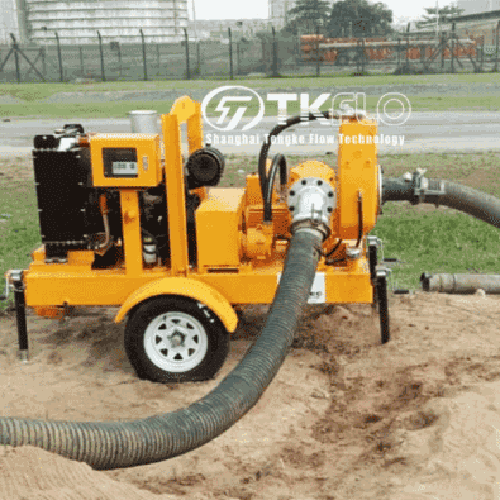
Vacuum Priming well point pump
Model No:TWP
TWP series Movable Diesel Engine self-priming Well point Water Pumps for emergency are joint designed by DRAKOS PUMP of Singapore and REEOFLO company of Germany . This series of pump can transport all kinds of clean, neutral and corrosive medium containing particles. Solve a lot of traditional self-priming pump faults. This kind of self-priming pump unique dry running structure will be automatic startup and restart without liquid for first start, The suction head can be more than 9 m; Excellent hydraulic design and unique structure keep the high efficiency more than 75%. And different structure installation for optional.
Bulk modulus (k)
or practical purposes, liquids may be regarded as incompressible. However, there are certain cases, such as unsteady flow in pipes, where the compressibility should be taken into account. The bulk modulus of elasticity,k, is given by:
where p is the increase in pressure which, when applied to a volume V, results in a decrease in volume AV. Since a decrease in volume must be associated with a proportionate increase in density, Equation 1 may be expressed as:
or water,k is approximately 2 150 MPa at normal temperatures and pressures. It follows that water is about 100 times more compressible than steel.
Ideal fluid
An ideal or perfect fluid is one in which there are no tangential or shear stresses between the fluid particles. The forces always act normally at a section and are limited to pressure and accelerative forces. No real fluid fully complies with this concept, and for all fluids in motion there are tangential stresses present which have a dampening effect on the motion. However,some liquids, including water, are near to an ideal fluid, and this simplified assumption enables mathematical or graphical methods to be adopted in the solution of certain flow problems.
Model No:XBC-VTP
XBC-VTP Series vertical long shaft fire fighting pumps are series of single stage, multistage diffusers pumps, manufactured in accordance with the latest National Standard GB6245-2006. We also improved the design with the reference of the standard of United States Fire Protection Association. It is mainly used for fire water supply in petrochemical, natural gas, power plant, cotton textile, wharf, aviation, warehousing, high-rising building and other industries. It can also apply to ship, sea tank, fire ship and other supply occasions.
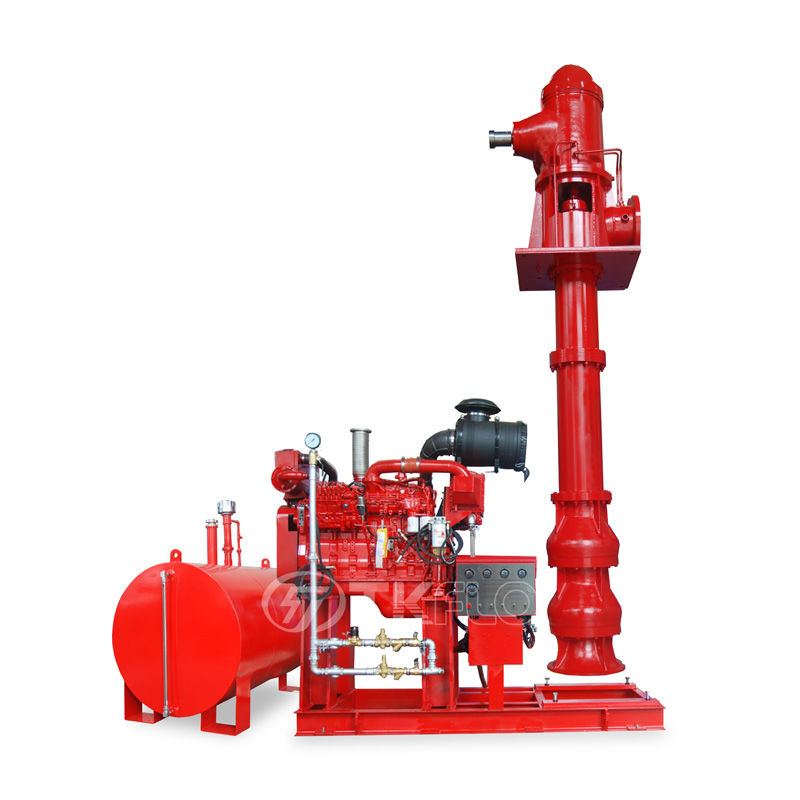
Viscosity
The viscosity of a fluid is a measure of its resistance to tangential or shear stress. It arises from the interaction and cohesion of fluid molecules. All real fluids possess viscosity, though to varying degrees. The shear stress in a solid is proportional to strain whereas the shear stress in a fluid is proportional to the rate of shearing strain.It follows that there can be no shear stress in a fluid which is at rest.

Fig.1.Viscous deformation
Consider a fluid confined between two plates which are situated a very short distance y apart(Fig. 1). The lower plate is stationary whilst the upper plate is moving at velocity v. The fluid motion is assumed to take place in a series of infinitely thin layers or laminae, free to slide one over the other. There is no cross-flow or turbulence. The layer adjacent to the stationary plate is at rest whilst the layer adjacent to the moving plate has a velocity v. The rate of shearing strain or velocity gradient is dv/dy. The dynamic viscosity or, more simply, the viscosity μ is given by

This expression for the viscous stress was first postulated by Newton and is known as Newton's equation of viscosity. Almost all fluids have a constant coefficient of proportionality and are referred to as Newtonian fluids.
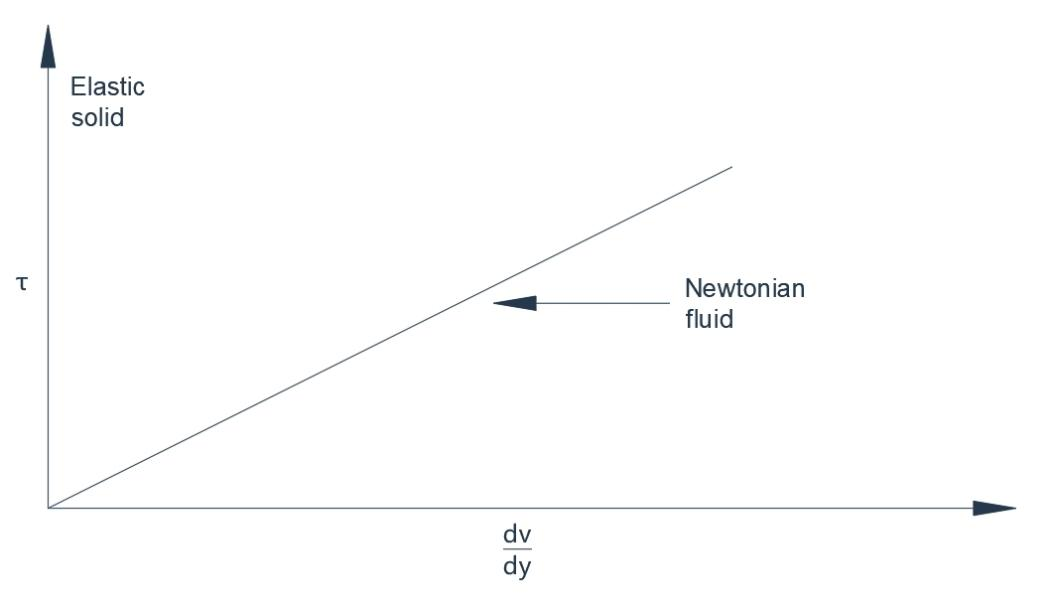
Fig.2. Relationship between shearing stress and rate of shearing strain.
Figure 2 is a graphic representation of Equation 3 and demonstrates the different behaviours of solids and liquids under shearing stress.
Viscosity is expressed in centipoises (Pa.s or N.s/m2).
In many problems concerning fluid motion, the viscosity appears with the density in the form μ/p(independent of force) and it is convenient to employ a single term v, known as the kinematic viscosity.
The value of ν for a heavy oil may be as high as 900 x 10-6m2/s, whereas for water, which has a relatively low viscosity, it is only 1,14 x 10?m2/s at 15° C. The kinematic viscosity of a liquid diminishes with increasing temperature. At room temperature, the kinematic viscosity of air is about 13 times that of water.
Surface tension and capillarity
Note:
Cohesion is the attraction which similar molecules have for each other.
Adhesion is the attraction which dissimilar molecules have for each other.
Surface tension is the physical property which enables a drop of water to be held in suspension at a tap, a vessel to be filled with liquid slightly above the brim and yet not spill or a needle to float on the surface of a liquid. All these phenomena are due to the cohesion between molecules at the surface of a liquid which adjoins another immiscible liquid or gas. It is as though the surface consists of an elastic membrane, uniformly stressed, which tends always to contract the superficial area. Thus we find that bubbles of gas in a liquid and droplets of moisture in the atmosphere are approximately spherical in shape.
The surface tension force across any imaginary line at a free surface is proportional to the length of the line and acts in a direction perpendicular to it. The surface tension per unit length is expressed in mN/m. Its magnitude is quite small, being approximately 73 mN/m for water in contact with air at room temperature. There is a slight decrease in surface tension with increasing temperature.
In most applications in hydraulics, surface tension is of little significance since the associated forces are generally negligible in comparison with the hydrostatic and dynamic forces. Surface tension is only of importance where there is a free surface and the boundary dimensions are small. Thus in the case of hydraulic models, surface tension effects, which are of no consequence in the prototype,may influence the flow behaviour in the model, and this source of error in simulation must be taken into consideration when interpreting the results.
Surface tension effects are very pronounced in the case of tubes of small bore open to the atmosphere. These may take the form of manometer tubes in the laboratory or open pores in the soil. For instance, when a small glass tube is dipped into water, it will be found that the water rises inside the tube, as shown in Figure 3.
The water surface in the tube, or meniscus as it is called, is concave upwards. The phenomenon is known as capillarity, and the tangential contact between the water and the glass indicates that the internal cohesion of the water is less than the adhesion between the water and the glass. The pressure of the water within the tube adjacent to the free surface is less than atmospheric.
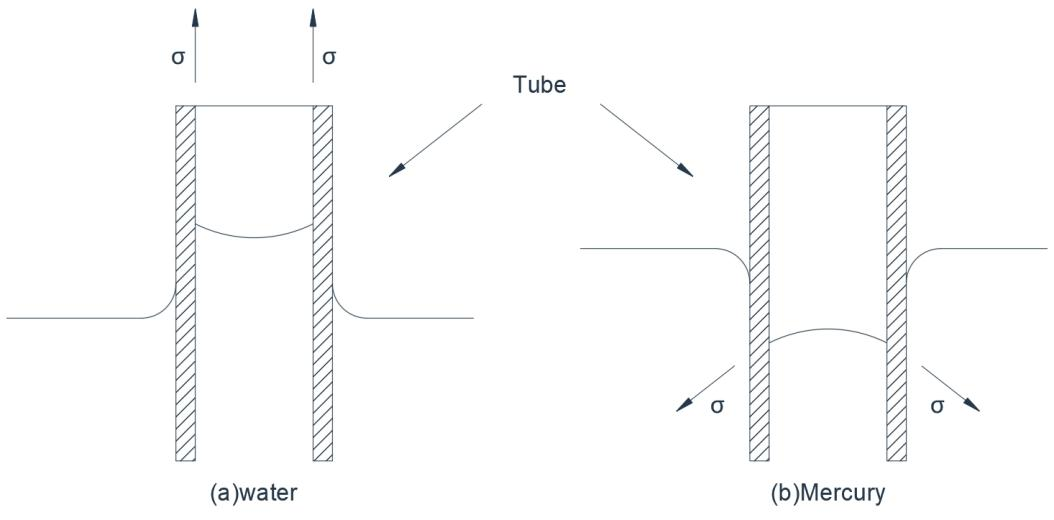
Fig. 3. Capillarity
Mercury behaves rather differently, as indicated in Figure 3(b).Since the forces of cohesion are greater than the forces of adhesion, the angle of contact is larger and the meniscus has a convex face to the atmosphere and is depressed. The pressure adjacent to the free surface is greater than atmospheric.
Capillarity effects in manometers and gauge glasses may be avoided by employing tubes which are not less than 10 mm diameter.
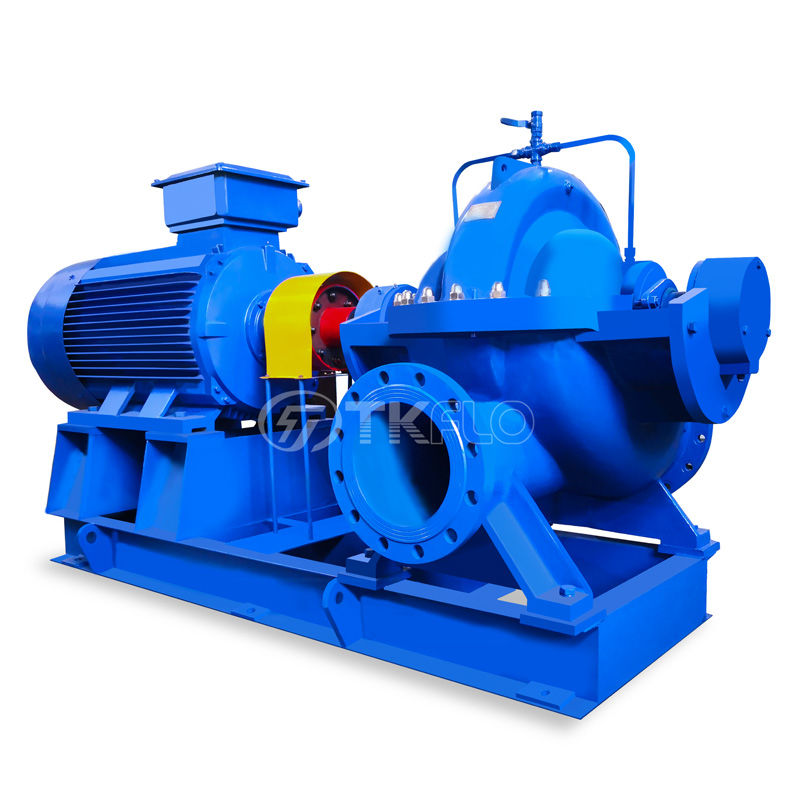
Centrifugal Sea Water Destination Pump
Model No:ASN ASNV
Model ASN and ASNV pumps are single-stage double suction split volute casing centrifugal pumps and used or liquid transportation for water works, air-conditioning circulation, building, irrigation, drainage pump station, electric power station, industrial water supply system, fire-fighting system, ship, building and so on.
Vapour pressure
Liquid molecules which possess sufficient kinetic energy are projected out of the main body of a liquid at its free surface and pass into the vapour. The pressure exerted by this vapour is known as the vapour pressure, P,. An increase in temperature is associated with a greater molecular agitation and thus an increase in vapour pressure. When the vapour pressure is equal to the pressure of the gas above it, the liquid boils. The vapour pressure of water at 15°C is 1,72 kPa(1,72 kN/m2).
Atmospheric pressure
The pressure of the atmosphere at the earth's surface is measured by a barometer. At sea level the atmospheric pressure averages 101 kPa and is standardised at this value. There is a decrease in atmospheric pressure with altitude; for in- stance,at 1 500m is reduced to 88 kPa. The water column equivalent has a height of 10,3 m at sea level, and is often referred to as the water barometer. The height is hypothetical, since the vapour pressure of water would preclude a complete vacuum being attained. Mercury is a much superior barometric liquid, since it has a negligible vapour pressure. Also, its high density results in a column of reasonable height -about 0,75 m at sea level.
As most pressures encountered in hydraulics are above atmospheric pressure and are measured by instruments which record relatively, it is convenient to regard atmospheric pressure as the datum, i.e. zero. Pressures are then referred to as gauge pressures when above atmospheric and vacuum pressures when below it. If true zero pressure is taken as datum, pressures are said to be absolute. In Chapter 5 where NPSH is discussed,all figures are expressed in absolute water barometer terms, i.e.sea level = 0 bar gauge = 1 bar absolute =101 kPa=10,3 m water.
Post time: Mar-20-2024
 seth@tkflow.com
seth@tkflow.com 



